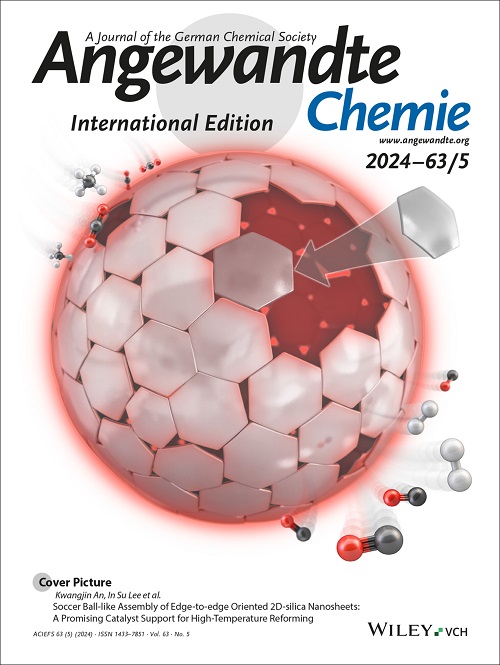Realizing Unconventional Tandem Nitrate Reduction for Efficient Ammonia Electrosynthesis Enabled by Co,Fe Dual‐Site Conjugated Metal Organic Frameworks
IF 16.1
1区 化学
Q1 CHEMISTRY, MULTIDISCIPLINARY
引用次数: 0
Abstract
The electrochemical nitrate‐to‐ammonia reduction reaction (NO3RR) offers a sustainable route for carbon‐neutral chemical synthesis, while the intricate multi‐electron/proton transfer processes and unstable intermediates pose significant challenges in attaining high selectivity and efficiency. This study demonstrates a Co,Fe bimetallic conjugated metal organic frameworks (CoFe‐cMOFs) that enable efficient NO3RR via an unconventional [6+2] electron‐transfer tandem pathway. Unlike the traditional [2+6] tandem pathway, the Fe sites predominantly reduce NO3− to *NH2OH intermediate, which subsequently spills over onto the Co sites for further protonation. This unconventional tandem pathway effectively avoids the release of NO2− and guarantees selective NH3 production. The CoFe‐cMOFs achieve 94.3% NH3‐producing Faradaic efficiency with a yield rate of 14.1 mg h−1 cm−2 in neutral electrolyte. The Zn‐NO3− battery prototype incorporating CoFe‐cMOFs exhibits 3.6 mW cm−2 peak power density with stable NH3 production. This work proposes a mechanistic breakthrough in tandem pathway regulation for selective electrochemical ammonia synthesis.Co,Fe双位共轭金属有机框架实现非常规串联硝酸盐还原高效氨电合成
电化学硝酸-氨还原反应(NO3RR)为碳中性化学合成提供了一条可持续的途径,但复杂的多电子/质子转移过程和不稳定的中间体对实现高选择性和高效率构成了重大挑战。本研究展示了一种Co,Fe双金属共轭金属有机框架(CoFe - cMOFs),通过非常规的[6+2]电子转移串联途径实现高效的NO3RR。与传统的[2+6]串联途径不同,Fe位点主要将NO3−还原为*NH2OH中间体,这些中间体随后溢出到Co位点进行进一步的质子化。这种非常规的串联途径有效地避免了NO2−的释放,并保证了选择性NH3的产生。在中性电解质中,CoFe - cMOFs的NH3产率达到了94.3%,产率为14.1 mg h−1 cm−2。含有CoFe - cMOFs的Zn - NO3 -电池原型具有3.6 mW cm - 2的峰值功率密度和稳定的NH3产量。这项工作提出了选择性电化学合成氨串联途径调控的机制突破。
本文章由计算机程序翻译,如有差异,请以英文原文为准。
求助全文
约1分钟内获得全文
求助全文
来源期刊
CiteScore
26.60
自引率
6.60%
发文量
3549
审稿时长
1.5 months
期刊介绍:
Angewandte Chemie, a journal of the German Chemical Society (GDCh), maintains a leading position among scholarly journals in general chemistry with an impressive Impact Factor of 16.6 (2022 Journal Citation Reports, Clarivate, 2023). Published weekly in a reader-friendly format, it features new articles almost every day. Established in 1887, Angewandte Chemie is a prominent chemistry journal, offering a dynamic blend of Review-type articles, Highlights, Communications, and Research Articles on a weekly basis, making it unique in the field.

 求助内容:
求助内容: 应助结果提醒方式:
应助结果提醒方式:


